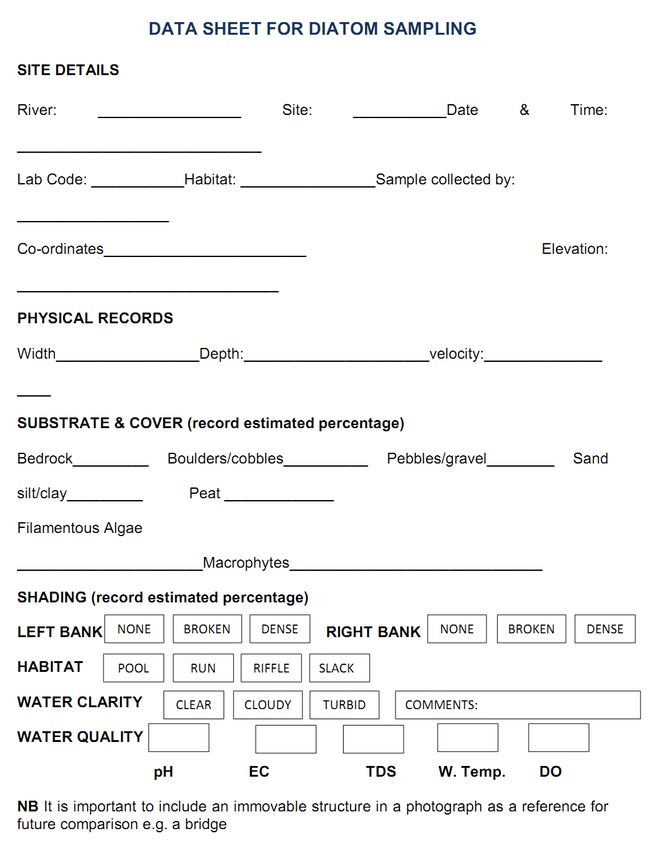| |
ENVIS Technical Report: 43, February 2012 |
 |
ECOLOGICAL STATUS OF DANDELI ANSHI TIGER RESERVE |
 |
Energy and Wetlands Research Group, Centre for Ecological Sciences,
Indian Institute of Science, Bangalore – 560012, India.
*Corresponding author: cestvr@ces.iisc.ac.in
|
|
DIATOMS
Diatoms constitute a fundamental link between primary (autotrophic) and secondary (heterotrophic) production and form a vital component of aquatic ecosystems. Features such as siliceous cell wall (frustules), possession of unique photosynthetic pigments and specific storage products make them unique amongst the algae. The use of diatom tolerance values in water quality monitoring traces its history to Europe, where it has been used for a century and considered important for biomonitoring across the globe. Diatoms are frequently used as bio-indicators, and if they are not investigated live, they may be perceived simply as “glass boxes” used to give information about water quality. Diatoms have been shown to be reliable indicators of specific water quality problems such as organic pollution, eutrophication, acidification and metal pollution.
COLLECTION METHODS:
EPILITHIC DIATOMS: At least five cobbles (> 64, 256 mm) or small boulders (> 256 mm) should be collected without bias to one side of the river or the other from areas which have an obvious diatom film (detected by either its brown colour or slimy texture). Stones should be selected, as far as possible, from unshaded areas within the main flow and free from obvious filamentous algae or siltation. Any loosely attached surface contamination on the biofilm should be removed by gentle agitation in the stream water. The stones should be placed in a tray, along with approximately 50 ml of river water. Wash a stiff toothbrush in clean river water and rub it on waders or a similar surface in order to remove any diatom contamination from previous samples. Brush the upper surface of the stone vigorously to remove the diatom film, rinsing the toothbrush periodically in the water in order to transfer the diatoms. Replace the stone in the stream, and repeat the process for the other replicate stones. Transfer the water (which should now be brown and turbid due to the presence of diatoms) from the tray into the sample bottle. All sample containers must be labeled. Preserve the sample with Ethanol.
EPIPHYTIC DIATOMS: Replicate samples from five different plants of the same species should be taken. Samples of plants growing in the main flow of the river should be placed into a plastic bag along with about 50 ml of stream water. Each replicate should consist of a single stem plus associated branches of the plant from the lowest healthy leaves to the tip. Diatom epiphytes should be present as a brown floc or film associated with the macrophytes. The plants should be shaken vigorously in the plastic bag in order to dislodge attached diatoms. The result should be a brown suspension that can then be poured into a bottle. All sample containers must be labeled. Preserve the sample with Ethanol.

|
|
|
T.V. Ramachandra
Centre for Sustainable Technologies,
Centre for infrastructure, Sustainable Transportation and Urban Planning (CiSTUP),
Energy & Wetlands Research Group, Centre for Ecological Sciences, Indian Institute of Science, Bangalore – 560 012, INDIA.
E-mail : cestvr@ces.iisc.ac.in
Tel: 91-080-22933099/23600985,
Fax: 91-080-23601428/23600085
Web: http://ces.iisc.ac.in/energy
Subash Chandran M.DEnergy & Wetlands Research Group, Centre for Ecological Sciences, Indian Institute of Science, Bangalore – 560 012, INDIA.
E-mail:
mds@ces.iisc.ac.in
Rao G.R
Energy & Wetlands Research Group, Centre for Ecological Sciences, Indian Institute of Science, Bangalore – 560 012, INDIA.
E-mail:
grrao@ces.iisc.ac.in
Amit Yadav
Energy & Wetlands Research Group, Centre for Ecological Sciences, Indian Institute of Science, Bangalore – 560 012, INDIA.
Gururaja KV
Energy & Wetlands Research Group, Centre for Ecological Sciences, Indian Institute of Science, Bangalore – 560 012, INDIA.
E-mail:
gururaj@ces.iisc.ac.in
Karthick B
Energy & Wetlands Research Group, Centre for Ecological Sciences, Indian Institute of Science, Bangalore – 560 012, INDIA.
E-mail:
karthick@ces.iisc.ac.in
Uttam Kumar
Energy & Wetlands Research Group, Centre for Ecological Sciences, Indian Institute of Science, Bangalore – 560 012, INDIA.
E-mail:
uttam@ces.iisc.ac.in
Durga Madhab Mahapatra
Energy & Wetlands Research Group, Centre for Ecological Sciences, Indian Institute of Science, Bangalore – 560 012, INDIA.
E-mail:
durgamadhab@ces.iisc.ac.in
Vishnu D.M
Energy & Wetlands Research Group, Centre for Ecological Sciences, Indian Institute of Science, Bangalore – 560 012, INDIA.
Citation: Ramachandra. T.V, Subash Chandran M.D, Rao GR, Amit Yadav, Gururaja KV, Karthick B, Uttam Kumar, Durga Madhab Mahapatra and Vishnu D.M, 2012. Ecological status of Dandeli Anshi Tiger Reserve., ENVIS Technical Report : 43, Energy & Wetlands Research Group, Centre for Ecological Sciences, Indian Institute of Science, Bangalore 560 012.
* According to IUCN red data list.
* According to IUCN red data list.